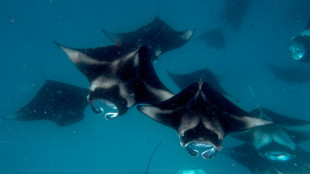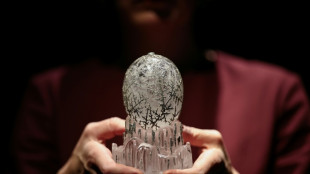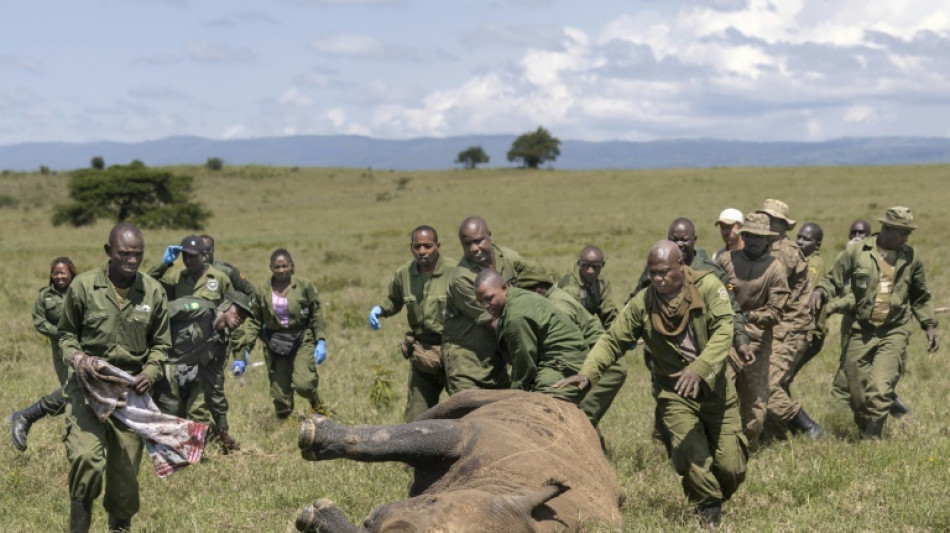
-
 Formula One title showdown: the road to Abu Dhabi
Formula One title showdown: the road to Abu Dhabi
-
Pope Leo holds Beirut mass, visits port blast site

-
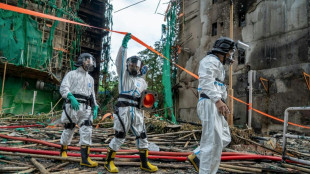 Hong Kong leader says independent committee to probe fire
Hong Kong leader says independent committee to probe fire
-
How deforestation turbocharged Indonesia's deadly floods
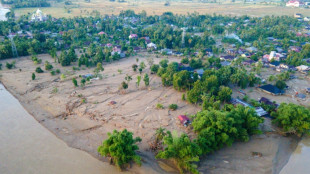
-
 New Zealand 231-9 as 'old school' West Indies exploit pace-friendly wicket
New Zealand 231-9 as 'old school' West Indies exploit pace-friendly wicket
-
England spinner Jacks replaces injured Wood for second Ashes Test

-
 Pope Leo to hold Beirut mass, visit port blast site
Pope Leo to hold Beirut mass, visit port blast site
-
Australia opener Khawaja out of second Ashes Test with injury

-
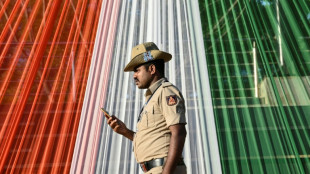 Concern as India orders phone manufacturers to preload govt app
Concern as India orders phone manufacturers to preload govt app
-
French talent Kroupi 'ready to suffer' to realise Premier League dream

-
 New Zealand 231-9 as West Indies exploit bowler-friendly wicket
New Zealand 231-9 as West Indies exploit bowler-friendly wicket
-
US Republicans sweat toss-up election in traditional stronghold

-
 'Rescued my soul': Hong Kong firefighters save beloved pets
'Rescued my soul': Hong Kong firefighters save beloved pets
-
Suns eclipse shoddy Lakers, Mavs upset Nuggets

-
 Seven footballers in Malaysia eligibility scandal 'victims': union
Seven footballers in Malaysia eligibility scandal 'victims': union
-
Patriots on brink of playoffs after Giants rout

-
 Survivors, families seek answers to deadly Hong Kong ferry disaster
Survivors, families seek answers to deadly Hong Kong ferry disaster
-
Race to get aid to Asia flood survivors as toll nears 1,200

-
 Rugby World Cup draw: who, how and when?
Rugby World Cup draw: who, how and when?
-
Williamson falls for 52 as NZ reach 128-5 in West Indies Test

-
 Hong Kong leader announces 'independent committee' to probe fire
Hong Kong leader announces 'independent committee' to probe fire
-
South Korean leader calls for penalties over e-commerce data leak

-
 Samsung unveils first 'special edition' triple-folding phone
Samsung unveils first 'special edition' triple-folding phone
-
Apple AI chief leaving as iPhone maker plays catch-up

-
 Asian markets rise as US rate cut bets temper Japan bond unease
Asian markets rise as US rate cut bets temper Japan bond unease
-
Weight of history against England in pink-ball Gabba Ashes Test

-
 How South Korea's brief martial law upended lives
How South Korea's brief martial law upended lives
-
VR headsets take war-scarred children to world away from Gaza
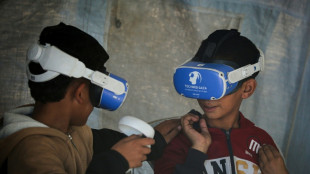
-
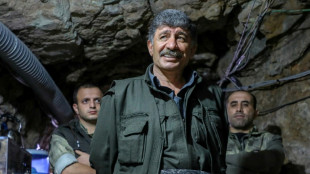 'We chose it': PKK fighters cherish life in Iraq's mountains
'We chose it': PKK fighters cherish life in Iraq's mountains
-
US envoy to meet Russia's Putin for talks on ending Ukraine war

-
 Pope Leo holds Beirut mass and visits site of port blast
Pope Leo holds Beirut mass and visits site of port blast
-
'Quad God' Malinin ramps up Olympic preparations at Grand Prix Final

-
 New Zealand 17-1 at lunch in rain-hit West Indies Test
New Zealand 17-1 at lunch in rain-hit West Indies Test
-
Pacific island office enabling sanctions-busting 'shadow fleets'

-
 White House gets scaled-down Christmas display amid ballroom work
White House gets scaled-down Christmas display amid ballroom work
-
GEN Announces New Positive Phase 1 Trial Data of the Investigational Drug SUL-238 for Alzheimer's and Other Neurodegenerative Diseases

-
 White House confirms admiral ordered 2nd strike on alleged drug boat
White House confirms admiral ordered 2nd strike on alleged drug boat
-
Nigeria's defence minister resigns amid security crisis: presidency

-
 From Honduras to Poland, Trump meddles in elections as never before
From Honduras to Poland, Trump meddles in elections as never before
-
Trump holds Venezuela meeting as Maduro rejects 'slave's peace'

-
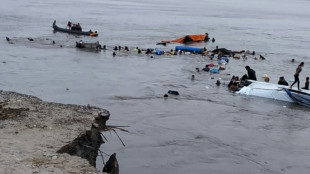 12 dead, dozens missing as landslide submerges boats in Peru port
12 dead, dozens missing as landslide submerges boats in Peru port
-
Vardy's first Serie A double fires Cremonese past high-flying Bologna

-
 Rich art: French pastry chefs auction chocolate sculptures
Rich art: French pastry chefs auction chocolate sculptures
-
Cameroon sack coach Brys, drop goalkeeper Onana for AFCON

-
 Son of Mexican crime lord 'El Chapo' pleads guilty in drug case: US media
Son of Mexican crime lord 'El Chapo' pleads guilty in drug case: US media
-
Right-wing rivals for Honduras presidency in 'technical tie'

-
 US upbeat on pushing Ukraine deal as envoy heads to Russia
US upbeat on pushing Ukraine deal as envoy heads to Russia
-
European rocket puts S.Korean satellite in orbit

-
 Trump to meet top national security team on Venezuela
Trump to meet top national security team on Venezuela
-
US Supreme Court hears major online music piracy case

| RBGPF | 1.54% | 79 | $ | |
| CMSC | -0.39% | 23.32 | $ | |
| BCC | -1.18% | 75.13 | $ | |
| GSK | -1.42% | 47.19 | $ | |
| SCS | 0.55% | 16.38 | $ | |
| RELX | -1.23% | 39.72 | $ | |
| BTI | -0.91% | 58.13 | $ | |
| BCE | -0.09% | 23.49 | $ | |
| NGG | -0.61% | 75.65 | $ | |
| CMSD | -0.13% | 23.29 | $ | |
| BP | 1.12% | 36.51 | $ | |
| RIO | 0.03% | 71.97 | $ | |
| JRI | -0.15% | 13.78 | $ | |
| RYCEF | -2.68% | 13.83 | $ | |
| AZN | -2.44% | 90.52 | $ | |
| VOD | -2.8% | 12.13 | $ |

How to move a rhino
Barely feeling the tranquiliser shot, the panic-stricken female rhinoceros ran to take shelter in a wooded area, eluding the low-flying helicopter trying to prevent her escape.
The rhino was supposed to be transferred to another park in Kenya on Saturday, but outsmarted the humans.
A few minutes later, rangers in 4x4 vehicles searched through thickets too dense for the crane truck that was meant to carry her away.
A decision was quickly made to administer the antidote to the tranquilise to prevent her from collapsing. If she fell the wrong way, she could suffocate.
The young female will therefore remain where she was born.
"The rhino is the worst one to translocate," said Taru Sheldrick, who was piloting the helicopter in Nakuru National Park in northwest Kenya, an oasis of greenery surrounding a deep blue lake.
"When you dart them, if you don't have long enough, they're running straight for thick bush, which is their security," he said.
"Whenever you're darting a rhino, you have a little bit of fear. Because it's a species in danger. Every animal is just so important."
Rhinos, which can weigh up to two tonnes, were once abundant in sub-Saharan Africa. But hunting by European colonisers and later large-scale poaching pushed them to the brink of extinction.
- Race against time -
The International Rhino Foundation (IRF) says there are about 28,000 left in the world, nearly 24,000 in Africa.
Kenya is home to more than 2,000 of them.
Rhinos reproduce less efficiently if too many of its kin live in the same location, according to the Kenya Wildlife Service (KWS), which manages the country's parks.
Moving them is therefore important, but rhinos are vulnerable to tranquilisers that slow their breathing, increase their body temperature and affect their heart rate, said Dr Dominic Mijele from KWS.
So it is a race against time as soon as a veterinarian, aboard a helicopter, administers the drug using a dart gun.
Five to seven minutes after injection, the rhino begins to feel groggy.
Then it collapses, as AFP observed on Saturday: after the first female retreated into the bush, three other black rhinos were anaesthetised within the span of a few hours in Nakuru.
A rescue team arrived on-site within two minutes of each shot, moving like a well-oiled machine.
About a dozen caregivers surrounded the animals, spraying them with water to cool their body temperature, rolling them onto their sides to ensure their respiration was not obstructed, administering oxygen and monitoring their vital signs.
Simultaneously, several other rangers secured the animals with straps threaded through the transport cage and attached to the front bumper of a jeep.
Fifteen minutes after the rescue team's arrival, the antidote was administered.
The animal then jolted to its feet and was promptly guided into a cage, which a crane loaded onto the flatbed of a truck.
- 'Number one' -
Mijele boasted of Kenya's unmatched expertise.
"We are number one in the world. We have done so many rhino translocations successfully," he said.
Jochen Zeitz, the owner of the private Segera Reserve, where about 20 rhinos have been relocated in the past two weeks, could not hide his relief after the latest operation.
On his 200 square kilometres of land, elephants, buffalos, lions, leopards, cheetahs and more roam freely, said the former Puma CEO and current Harley-Davidson executive.
But the reserve lacked "this iconic species" which were present up until 60 years ago in Segera, but have since disappeared.
Welcoming rhinos back is "completing the conservation work that we've done as a foundation over the last 22 years" since acquiring the land, he told AFP.
Due to the high risk of poaching for their horns, security measures had to be significantly enhanced with 100-150 new security staff, Zeitz said.
Late Saturday, a small group witnessed the release of the three rhinos from Nakuru, who had arrived in Segera after a six-hour drive.
In the dense night darkness, they listened as the metal bars of the transport cages were removed, doors creaked open, and heavy stomping accompanied by guttural growls rang out.
The rhinos had finally arrived at their new home.
P.Staeheli--VB


